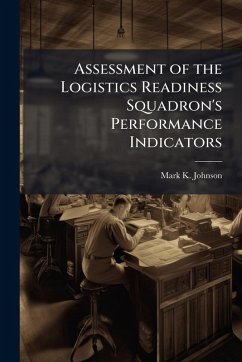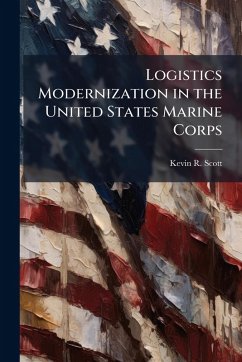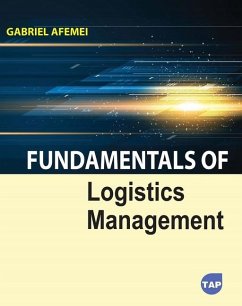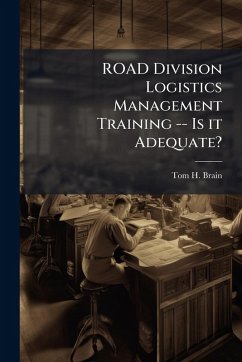
An Analysis of Third Party Logistics and Implications for USAF Logistics
Versandkostenfrei!
Versandfertig in über 4 Wochen
17,99 €
inkl. MwSt.
Weitere Ausgaben:

PAYBACK Punkte
9 °P sammeln!
This study was undertaken to determine the current trends in third party logistics. The Air Force Material Command Lean Logistics office sought information for improving USAF logistics support. The purposes of this study were to report results of third party logistics use, determine characteristics of successful third party relationships, and to discuss the implications for USAF logistics managers. A qualitative research methodology was chosen using multiple case studies. Logistics managers from eight third party users and ten third party providers were administered an extensive research proto...
This study was undertaken to determine the current trends in third party logistics. The Air Force Material Command Lean Logistics office sought information for improving USAF logistics support. The purposes of this study were to report results of third party logistics use, determine characteristics of successful third party relationships, and to discuss the implications for USAF logistics managers. A qualitative research methodology was chosen using multiple case studies. Logistics managers from eight third party users and ten third party providers were administered an extensive research protocol. The results revealed an industry which is growing rapidly. While the momentum for third party logistics use was strong, most managers cautioned for the use of an incremental approach to using third party logistics. This permits an easier transition for the using organization and leaves the option open to return logistics in-house if the provider is lacking. This work has been selected by scholars as being culturally important, and is part of the knowledge base of civilization as we know it. This work was reproduced from the original artifact, and remains as true to the original work as possible. Therefore, you will see the original copyright references, library stamps (as most of these works have been housed in our most important libraries around the world), and other notations in the work. This work is in the public domain in the United States of America, and possibly other nations. Within the United States, you may freely copy and distribute this work, as no entity (individual or corporate) has a copyright on the body of the work. As a reproduction of a historical artifact, this work may contain missing or blurred pages, poor pictures, errant marks, etc. Scholars believe, and we concur, that this work is important enough to be preserved, reproduced, and made generally available to the public. We appreciate your support of the preservation process, and thank you for being an important part of keeping this knowledge alive and relevant.












